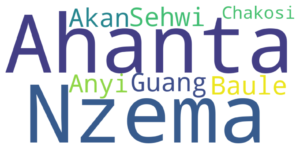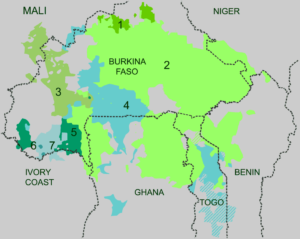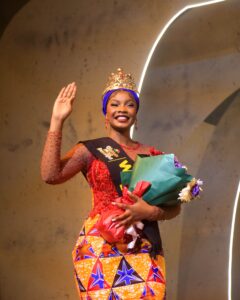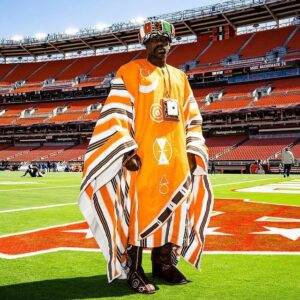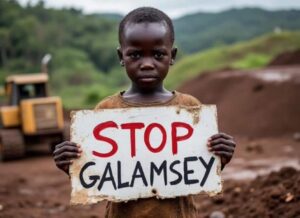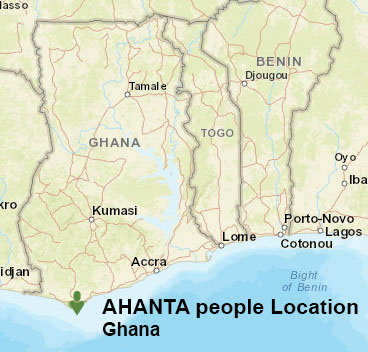
Source: 101 Lat Tribe
Ahanta, also known as “Aɣɩnda”, is a stable indigenous Ghanaian language which belongs to the Niger-Congo family of languages (Ethnologue, 2024 Ed.). Ahanta is a dialect of the Akan language family, which is spoken by people in Ghana, Cote d’Ivoire, and other West African countries (Gordon, Jr., 2005). Anthropological evidence indicates that Ahanta means “The land of Twins”. As to whether the language is indeed an Akan language or not alongside sister dialect Nzema has been a debate for years.
Ahanta is primarily spoken in the Western Region of Ghana, along the coast between the cities of Axim and Sekondi-Takoradi. It is considered by Obeng (2021) as having relatively minority indegenes and minority users. Ahanta is only a community language (Ethnologue, 2024 Ed.).
According to the Ghana Statistical Services (2021) report on the 2021 Population and Housing Census (PHC), the population of the Ahantas, taking into consideration the major districts of Ahanta West, Effia-Kwesimintsim, Sekondi- Takoradi and Shama Districts, is 689, 721.
Previous studies by Stewart (1966) states that Ahantas are Akan people who speak the Anyi-Buale-Chakosi language. With this, Stewart (ibid.) asserts that Ahantas are only anthropological/ Geographical Akans but not Linguistic Akans as some people argue. This has also sparked another debate regarding the linguistic classification of the Ahanta language. Some scholars assert that Ahanta is a Guan dialect, based on the principle of mutual intelligibility. According to this perspective, Ahanta, along with Anyi, Baule, Chakosi, and Effutu, are all considered dialects of the Guan language group.

The territory of Ahanta, stretches from Beposo to Ankobra. Ahanta was a confederacy of chiefdoms that held significant power in the region and had established early relationships with European nations who came to trade on the Gold Coast (Van Dantzig, 1999). According to historical literature, Ahanta was part of the Fante Confederation alongside other Southern Akan states such as Denkyira, Wassa, Twifo, and Assin. This historical association has sparked a long-term online debate regarding whether Sekondi-Takoradi, the primary region of Ahanta, rightfully belongs to the Ahanta people. Proponents of the view that Sekondi-Takoradi is more appropriately a Fante state argue that the population of Fantes in the region significantly exceeds that of the Ahanta people. Regardless of the number of Ahanta speakers in the Western Region, the capital, Sekondi-Takoradi is widely known in Ghana as the land of the Ahantas.
A study on some phonological processes of Ahanta by Obeng (2021) reveals that the language comprises of three distinct varieties. The first one is called ‘Urban’ Ahanta, spoken in the Sekondi-Takoradi Metropolis and its surrounding areas, where the language is significantly influenced by Fante. The second variety is referred to as ‘Rural’ Ahanta, spoken in places like Adwoa, Funko, Ewusiejoe, Aboade, Agona Nkwanta, Busua, and Otopo. It is considered the most authentic form of Ahanta by the Ahanta people. The third variety is called Evaloe or Valoe, spoken in Princess Town, Akatekyi, Cape Three Points, and other Nzema communities beyond the Ankobra River. Evaloe is highly influenced by Nzema and is considered a variant of the Nzema language in recent times.
Despite the differences in sound, tone, and vocabulary, the three varieties are mutually intelligible. Overall, Ahanta is mutually intelligible to Nzema, also spoken in the Western Region of Ghana and parts of Ivory Coast. In Ghana, Ahantas can also found in Tema, in the Greater Accra Region.
The language does not have an educational status and as such, neighboring languages like Fante and Nzema are studied in schools in the Ahanta region. A move has been made by some Ahanta elites to push parliament to give the language an educational status in recent times. According to this group, they claim to have successfully developed Ahanta educational contents like grammar, literature, and have trained teachers who will support the Ahanta teaching. All has been in vain but the group keep pushing the government citing Nzema as case study.
Ahanta has existing contents like the Ahanta Bible, grammar, radio station (Radio Ahanta), movies, etc supporting its existence.
Bibliography:
- 101 Last Tribes. (n.d.). Ahanta People. Retrieved April 29, 2023, from https://www.101lasttribes.com/tribes/ahanta.html
- Eberhard, David & Simons, Gary & Fennig, Chuck. (2021). Ethnologue: Languages of the World, 24th Edition.
- Ghana Statistical Service (2021). 2021 Population and Housing Census. Summary Reports of final Results.
- Gordon, Jr., R. G. (Ed.). (2005). Ethnologue: Languages of the World (15th ed.). Dallas, TX: SIL International. Retrieved from https://www.ethnologue.com/language/aha.
- Obeng, P. (2021). Some Phonological Process in Ahanta, Hymlyan Edu Lte, 2(4) 36-50.
- Stewart, J.M. (1966). Akan history, some Linguistic evidence. Ghana Notes and Queries No. 12, pp. 13 – 16.
- van Dantzig, A. (1980). Forts and Castles. Sedco Publication.
